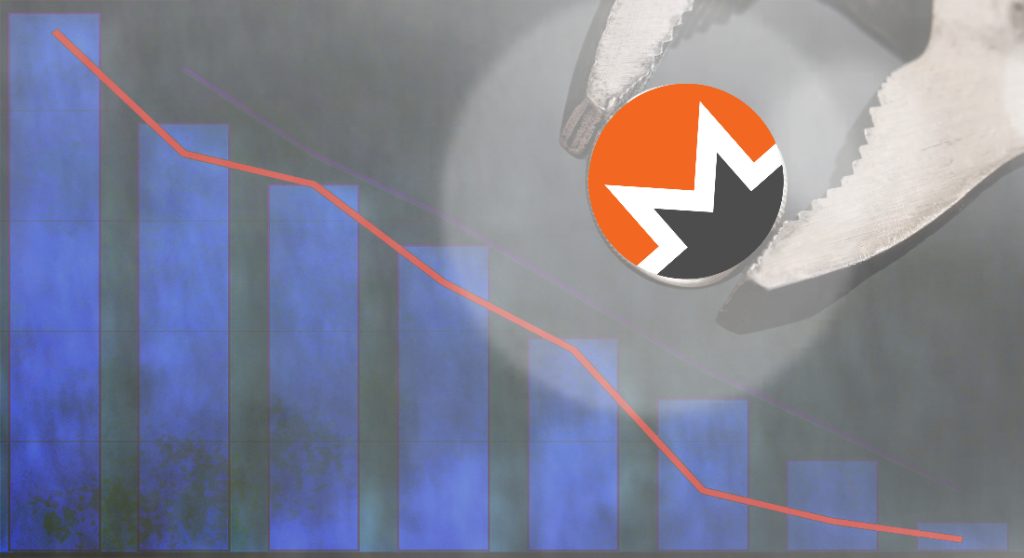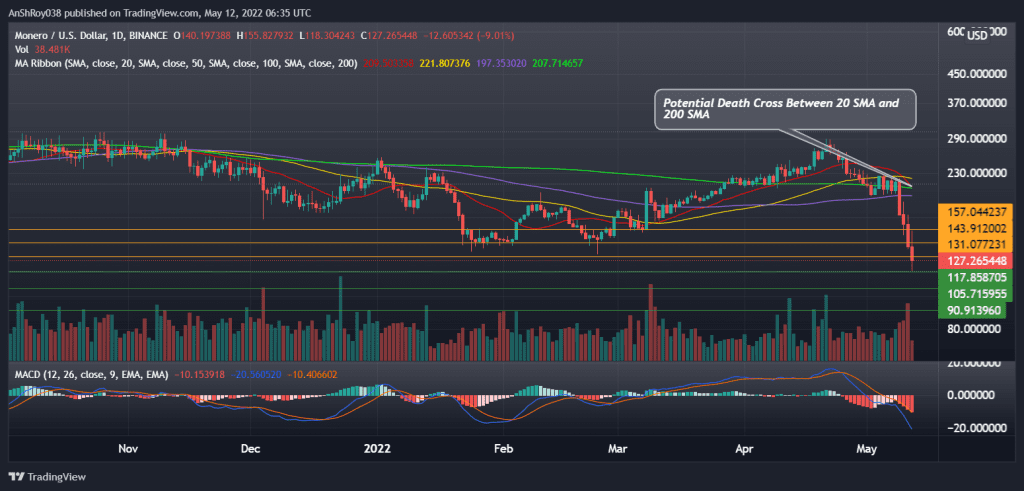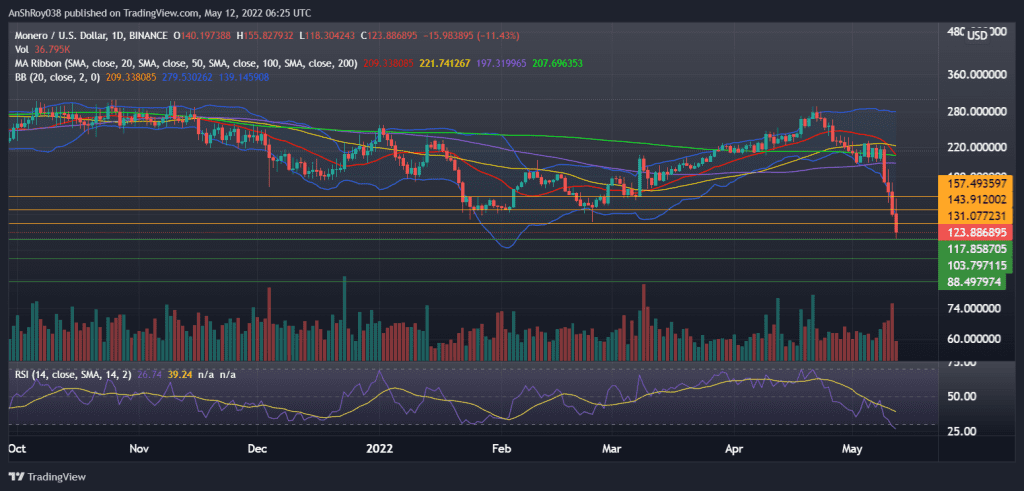Key Takeaways:
- XMR prices fell nearly 47% since May 9, as the crypto market continues to bleed.
- Monero's upcoming update has failed to attract bulls.

NEW DELHI (CoinChapter.com) — Privacy token Monero’s native token XMR fell nearly 28% against the U.S. dollar since May 9, seemingly in lockstep with the wider crypto market.
The May 9 crash started a bear run which saw Monero lose nearly 47%, as XMR dropped from May 9’s high of $221 to reach an intraday low of $118 on May 12. XMR bulls tried to reverse the trend on Tuesday, with prices jumping 12% on May 10 to reach $189 before bears pulled back prices.
As CoinChapter previously reported, a fall below $200 support could see XMR risk a 25% decline. XMR’s recent freefall pushed prices to $118, which validates the prediction.
Furthermore, Monero’s recent price action might cause XMR’s 20-day moving average (20-day MA, red wave) to move below its 200-day MA (green wave), creating a bearish pattern called the death cross. Traders usually consider the pattern an indicator of negative market sentiment.
In addition, momentum oscillator MACD continues to be bearish for the XMR token. Negative bars on the MACD histogram are expanding, indicating the MACD line (difference between 12-day and 26-day EMA) is moving away from the MACD signal line (9-day EMA of MACD).
Also Read: Monero price risks a 25% decline as XMR confirms a bearish triangle setup.
Expanding negative bars indicate a strengthening bearishness of Monero’s price momentum.

The bearish cues might see XMR prices fall to support near $118.
Moreover, a sustained downtrend could see the XMR token breach below immediate support and fall to support near $105. The $105 price level supported Monero’s price action between Nov 4, 2020, and Nov 26, 2020.
Finally, a marketwide sell-off could push prices to support near $91. XMR has not reached $91 since late Sept 2020. A price drop to $91 might further erode investor confidence in the privacy token.
XMR’s RSI Nearing Oversold Region
Meanwhile, Monero’s RSI is in oversold regions. In detail, when the RSI goes below 30, an asset enters the oversold region. Traders usually consider an oversold RSI to indicate a bullish trend reversal on the cards.
At present, XMR’s RSI is at 26.74 on the daily charts, with the RSI trendline moving further downwards. Additionally, the token also broke below the lower trendline of the Bollinger Bands indicator.
Bollinger bands consist of a simple moving average (middle band) and an upper and lower band. The two bands are standard deviations from the middle band. Therefore, when an asset’s prices break below the lower bands, it denotes an oversold condition.

Investors relying on RSI and Bollinger bands to predict price bottoms might start a buying spree to profit from the dip. As a result, XMR prices might rise to challenge immediate resistance near $131
Also Read: Why did Monero (XMR) price reach $278 on Binance? Twitter sees ‘Russian’ involvement.
A move above immediate resistance might see XMR prices challenge resistance near $143, which earlier supported Monero prices between Jan 22 and Feb 25 this year. Furthermore, a sustained uptrend might result in XMR reaching $157 before prices correct.
Monero’s Upcoming Tail Emission Update
Monero disclosed plans to introduce a Tail Emission update to improve its network. In detail, the update would help reduce network fees while helping increase security. Tail Emission is a “minimum subsidy” that would help to “keep fees reasonable, ensure a lower bound of network security, and enable dynamic block sizes.”
Recently, the Monero community voted that miners receive a minimum of 0.6 XMR for each mined block. With dynamic block sizes, competition among miners might cause prices to fall. In addition, high cost and low reward may cause miners to lose motivation and stop mining, decreasing network security.
Moreover, Monero’s Tail Emission update would ensure that miners are not reliant solely on transaction fees. Additionally, the upgrade would make Monero deflationary and allow miners to control network congestion better.
At the time of writing, XMR was trading at $124.7, down 10.8% on the day.


